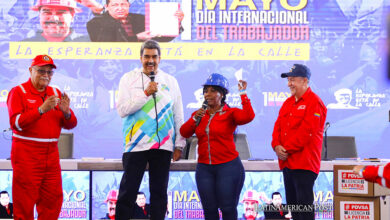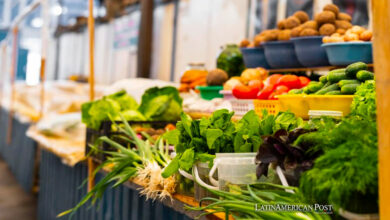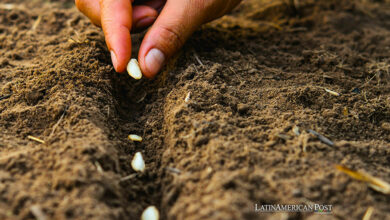Flour As An Inclusive Food, a Scientific Project From Venezuela
Venezuelan scientists are investigating the production of a new type of flour to democratize the arepa, the most consumed food in Venezuela .

Photo: EFE/ Miguel Gutiérrez
Héctor Pereira | EFE
Listen to this article
Leer en español: La harina como alimento inclusivo, un proyecto científico de Venezuela
A group of scientists from Venezuela is creating new flours, the most consumed food in the country, taking roots and tubers as raw materials, an idea that has been in a laboratory for years and that seeks to end up in stores, to satisfy the demands of celiacs, diabetics and other groups of people with corn intolerance.
The project, executed by the Institute of Food Science and Technology of the Central University (UCV), also gives options to people on the autism spectrum, athletes, the elderly and all those who seek to comply with a special diet in a country that eats hundreds of tons of pre-cooked flour every day.
The leader of the research, Professor Romel Guzmán, explained to EFE that , in addition to democratizing the arepa – the corn dough tortilla that Venezuelans eat practically every day -, they seek to change the consumption paradigm to take advantage of other national raw materials , whose flavors are already familiar to the public.
Exploitation
Guzmán, who has been investigating the area for 18 years, believes that South America has blended in with the rest of the world in terms of the "massive consumption" of cereal-based foods, which is why it has wasted its varied availability of roots and tubers, destined almost exclusively for to the preparation of soups.
But UCV researchers discovered that, with the proper transformation process, pumpkin, sweet potato, beet, fruit, carrot, ocumo, yam, potato and banana become mixtures ready to make cookies. , cakes and a wide variety of gluten-free baked goods.
"At a global level, roots and tubers, and other types of vegetables, have harvest losses of over 30% (…) we are giving added value" to that percentage, says the professor, who considers the recent proliferation of cassava or sweet potato chips, a step in the right direction to expand the palate.
Read also: Venezuela: 126 Minimum Monthly Salaries Cover a Basic Family Basket
The idea is to "study the nutritional characteristics of these raw materials" and see, from them, what products can be made to respond "to a large part of consumers," he explained, alluding to the millions of people who see limitations their options for the dominance of corn and wheat in the food industry.
It is about "overcoming that paradigm that with one flour we can only make an arepa," highlights the researcher.
From the garden to the store
From the moment the microplants are grown, which then go to the orchards to wait months for the harvest, until the product is packaged, after thermal, chemical and dehydration processes, about a year passes, but the result is not yet ready for cook.
This institute creates "raw flours" that require pre-cooking, something that the researchers describe as a simple task, so much so that they leave it in charge of the company that takes over the rights to this project, thereby completing the circle: science financed by the State generating profits.
"We are here to investigate and, obviously, transfer the knowledge to an entity that is in charge of this type of social actions, marketing, producing on a larger scale and then placing it on the shelf and making this possible and available for the general population," explains Guzmán.
Although he estimates that the sales costs to the public would be a little higher than that of corn flour, due to the higher humidity of the roots and tubers, he believes that "with good work structures" these products "can be viable for a large part of the population."
The professor and his team are convinced of the feasibility of the idea and hope to see it materialized in the commercialization of these flours and mixtures to respond to the demands of an underserved public and, in addition, continue research, which is experiencing a resurgence in Venezuela after eight years of economic contraction.




